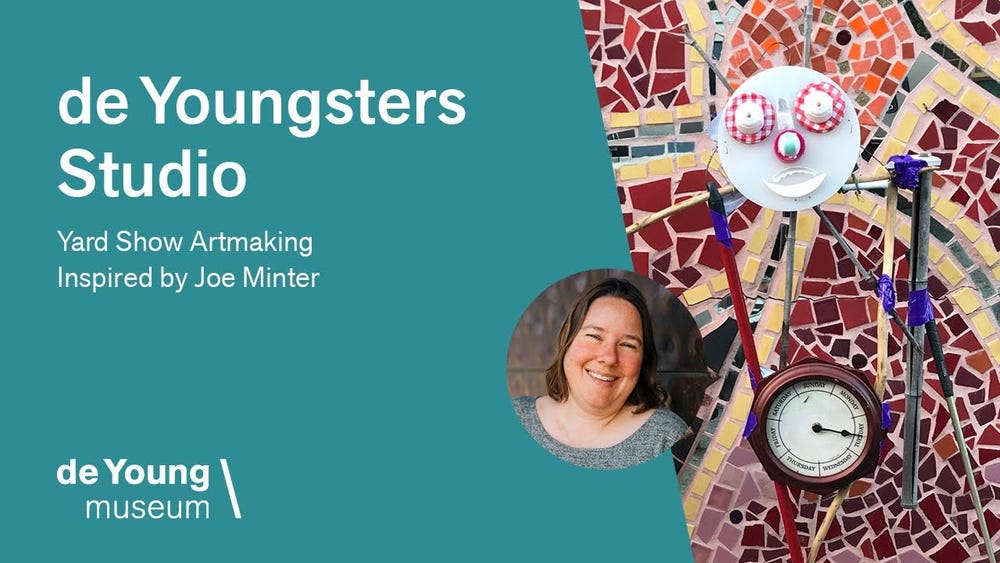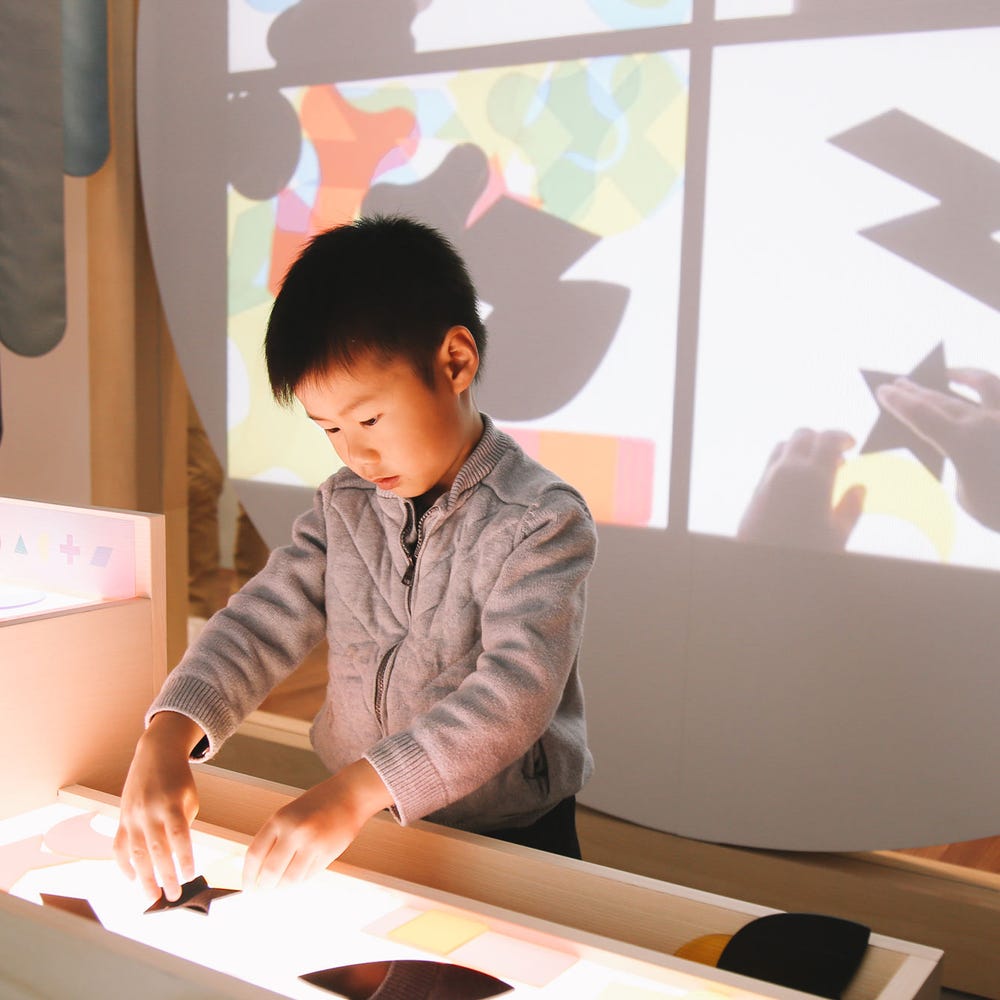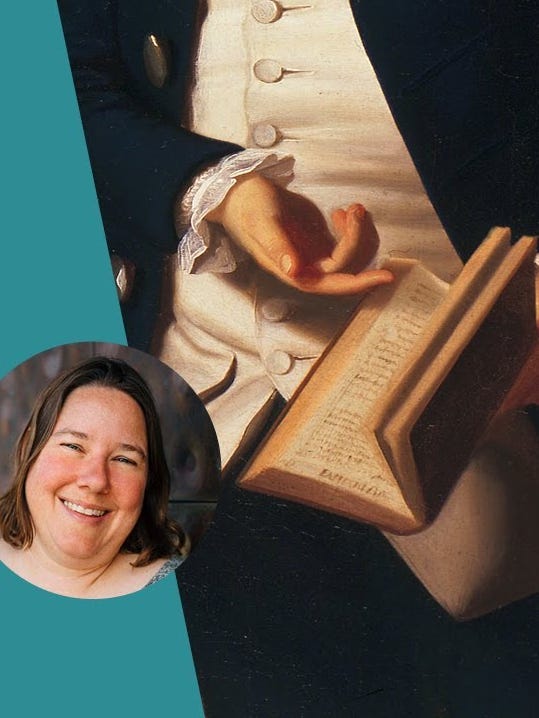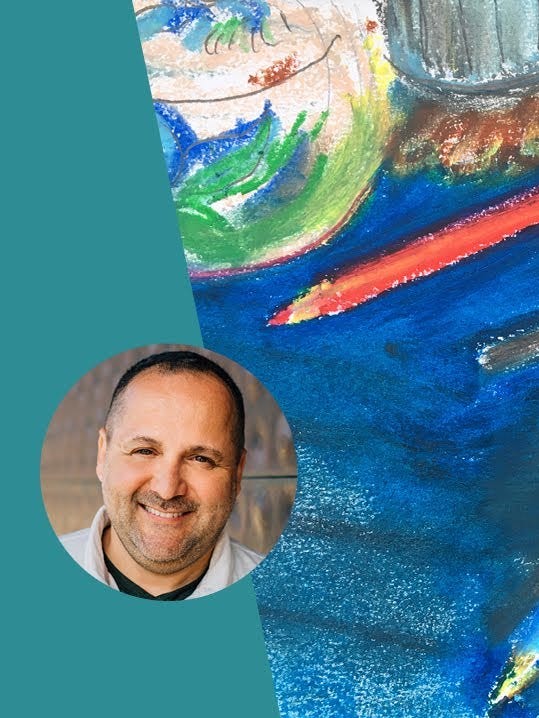de Youngsters Studio: Yard Show Art Making Inspired by Joe Minter
By Jill McLennan, senior teaching artist
October 16, 2020
A yard show is an art show that is displayed in your front yard or somewhere outside that is visible to the public. In this project, inspired by American sculptor Joe Minter and his artwork Camel at the Water Hole (1995), you will use found materials to put on a yard show with a social message for your community.
Prior to this activity, you’ll need to search your home, garage, neighborhood, and/or recycling bin for materials that can be reused or repurposed to create your yard-art sculpture. Make sure you get permission from adults that the items you find can be collected and used for art.
Questions to Consider
- What issues are you thinking a lot about recently?
- What message do you want to share with your community?
- In what ways can you express this idea?
Materials
You will need to gather at least one of the suggested items or something similar from each of the categories below, to help build different parts of your project.
- Paper and pencil for preliminary sketch
- Flat surfaces: cardboard, poster board, metal trays, wood pieces, or Plexiglas
- Marking tools: paint markers, paint and brushes, or permanent markers
- Fasteners: duck tape, wire, string, or glue
- Tools: scissors, wire cutters, drill, or hammer and nails
- Structural elements: sticks, poles, chair, easel, or sandwich board
- Base: bucket full of sand, street cone, weighted cardboard box, or block of wood
- Decorative items: buttons, bottle caps, feathers, ribbon, leaves, paper, or fabric scraps
Steps
1. Do a quick brainstorm of what your message will be and then make some sketches of how your sculpture might look.
2. Make a sign with your message on it. You can use cardboard and paint, or markers and poster board, or any other materials you find.
3. Gather up all of the materials you found that you want to use for your sculpture. Begin to move materials around and figure out how you would like them to go together to make something big. Remember that this will be a 3-D sculpture, seen from all sides, and it should be able to stand up on its own. Use large, sturdy items for the base and less heavy items for the upper parts of the piece. For example, if you are building a person who is standing up, you will want the feet to be large and heavy and the head to be smaller and lighter.
Consider the following questions:
- What is the best object/material for a base?
- How will you attach the different parts?
- How will you emphasize your message within the artwork?
- How large will your sculpture need to be in order to be noticed by others? (This is called scale.)
- How will your sculpture stand up or balance?
4. Figure out how to attach these pieces together. The easiest way is with duct tape. A slightly more difficult way is to get an adult to help you attach pieces with wire. In order to use wire, you need to have a hole or a place to loop the wire around both objects. Tools such as needle-nose pliers and wire cutters will be helpful.
5. Now that you have built the basic structure, you can add some decorative elements. You could glue on items, tie ribbon around the sculpture, or paint areas of it for emphasis.
6. Decide where to display your sculpture to the public and place it in its location.
Reflect
- What challenges and successes did you have in creating this sculpture?
- In what ways does your sculpture share a message with the public?
- What impact do you think art can have on the community?
Share
Once you have chosen the best place to install your sculpture to share it with your community, perhaps you can observe how people react to it. You can even take some pictures and share them with friends and family who aren’t in your neighborhood so your message travels farther.
After your piece has been displayed for a period of time, you may decide to take it down and return the parts to the recycling or garbage bin where you found them.
We would love to see what you make too, so please tag us on any social platform using the hashtag #deyoungsters.




